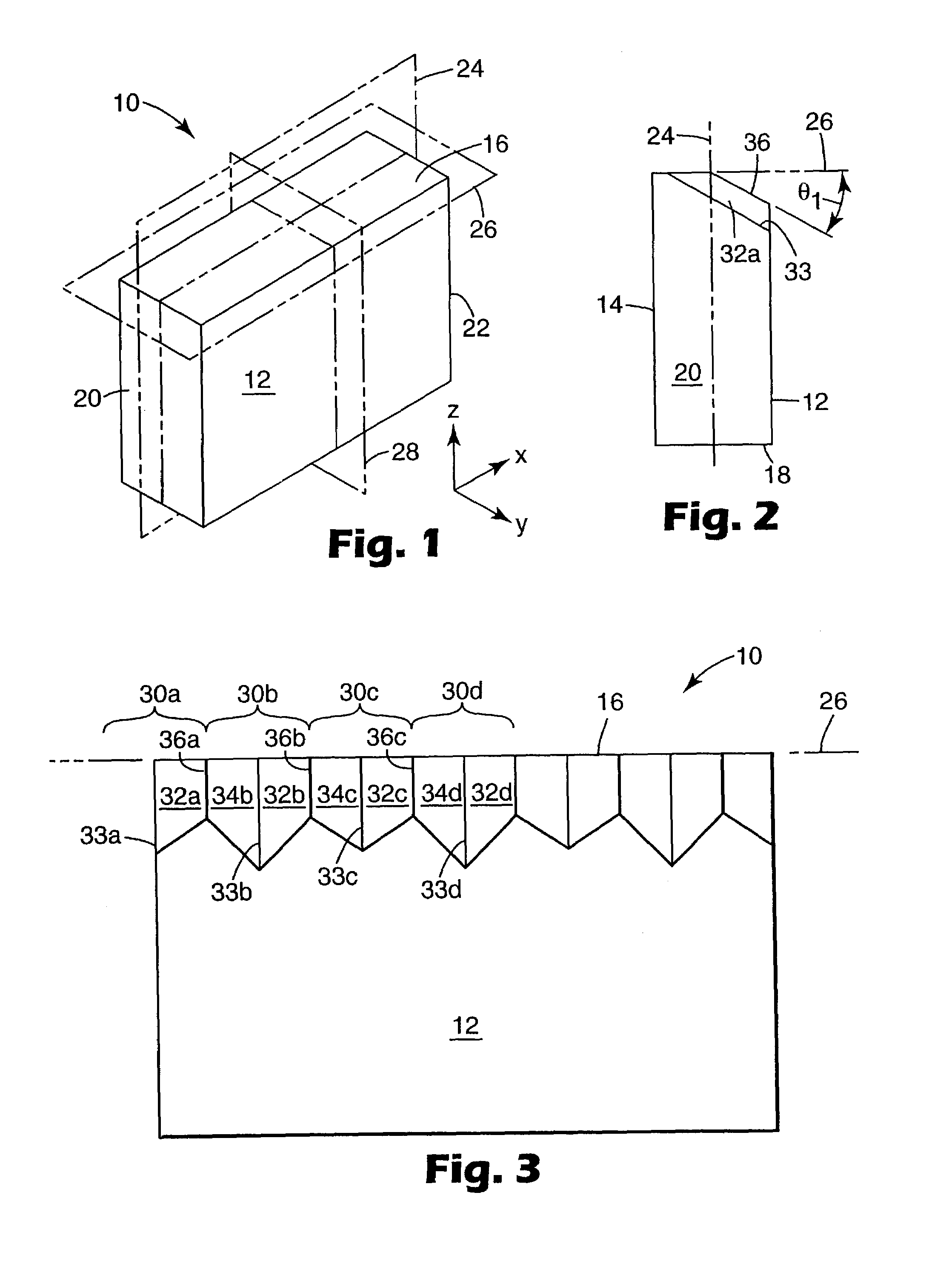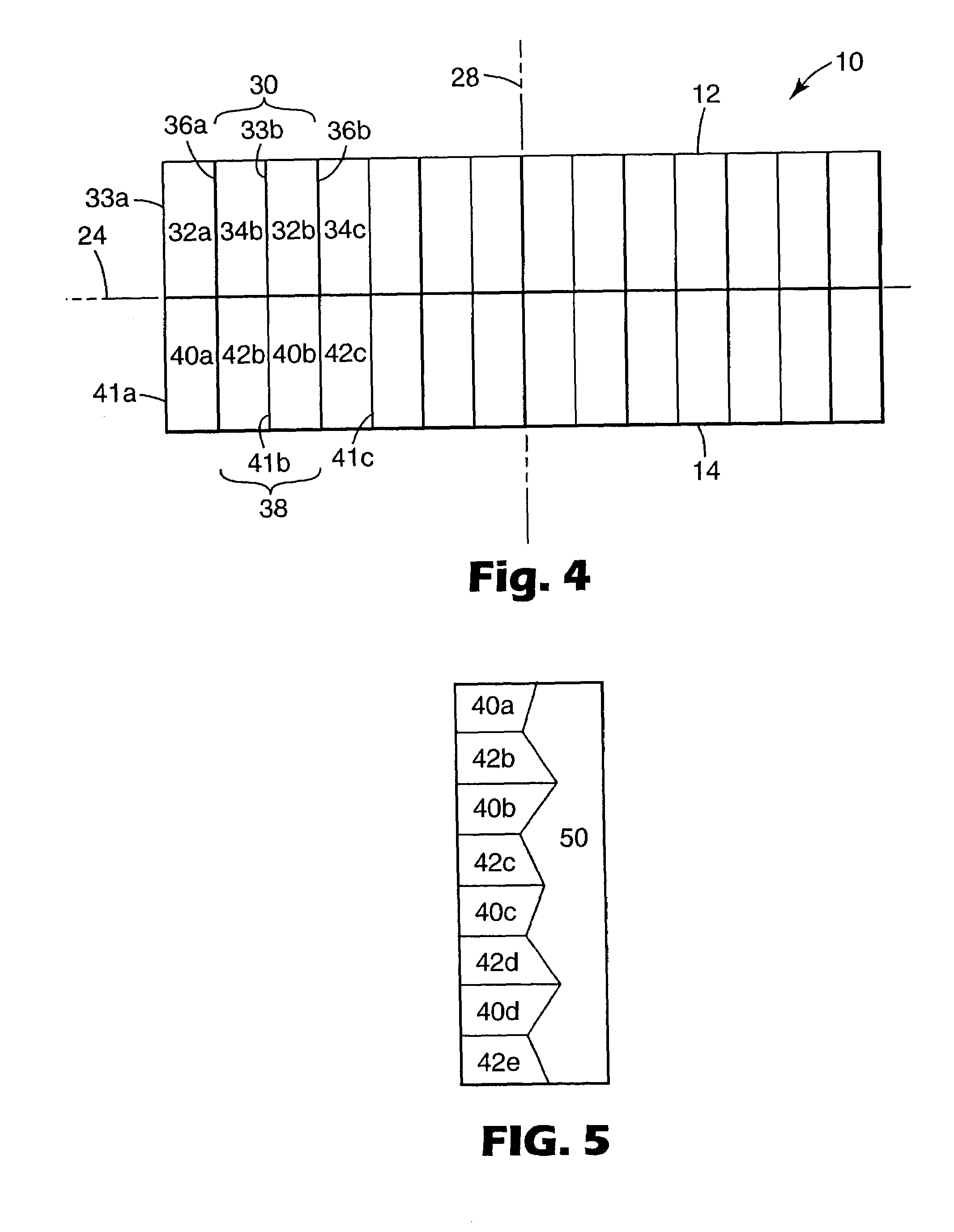Lamina comprising cube corner elements and retroreflective sheeting
a cube corner element and retroreflective technology, applied in the direction of roads, instruments, traffic signals, etc., can solve the problems of inpractical techniques for making small cube corner elements, low retroreflective efficiency of sheeting, and relatively low orientation sensitivity of microsphere-based sheeting, etc., to achieve the effect of improving brightness and improving properties
- Summary
- Abstract
- Description
- Claims
- Application Information
AI Technical Summary
Benefits of technology
Problems solved by technology
Method used
Image
Examples
examples 1a and 1b
[0157]Grooves were formed in individual lamina, the individual lamina assembled, and the microstructured surface replicated as described in previously cited U.S. patent application Ser. No. 10 / 383,039, filed Mar. 6, 2003. U.S. patent application Ser. No. 10 / 383,039 was filed concurrently with Provisional Patent Application Ser. No. 60 / 452,464 to which the present application claims priority. All the machined laminae had the geometry depicted in FIGS. 6 and 7, with slight variations due to varying the half angle error, skew and inclination of the side grooves. The lamina thickness was 0.0075 inches (0.1905 mm) and the side groove spacing was 0.005625 inches (0.1428 mm) except for the slight variations just described. A repeating pattern of eight cubes was sequentially formed on each lamina. This repeating pattern of cubes was formed by varying the half angle errors, skew, and inclination of the side grooves as set forth in forthcoming Tables 10–14. Each row in the tables defines the ...
PUM
| Property | Measurement | Unit |
|---|---|---|
| included angles | aaaaa | aaaaa |
| included angles | aaaaa | aaaaa |
| included angles | aaaaa | aaaaa |
Abstract
Description
Claims
Application Information
 Login to View More
Login to View More - R&D
- Intellectual Property
- Life Sciences
- Materials
- Tech Scout
- Unparalleled Data Quality
- Higher Quality Content
- 60% Fewer Hallucinations
Browse by: Latest US Patents, China's latest patents, Technical Efficacy Thesaurus, Application Domain, Technology Topic, Popular Technical Reports.
© 2025 PatSnap. All rights reserved.Legal|Privacy policy|Modern Slavery Act Transparency Statement|Sitemap|About US| Contact US: help@patsnap.com



